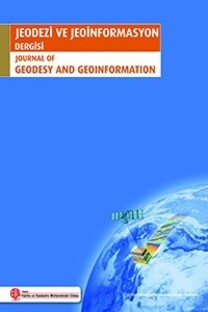GNSS alıcılarındaki saat sıçramalarının hassas nokta konumlama (PPP) performansına etkisinin araştırılması
GNSS (Global Navigation Satellite Systems) alıcılarında, GNSS uydularında kullanılan yüksek hassasiyetli atomik saatlerin aksine, genellikle daha ekonomik saatler kullanılmaktadır. Kristal osilatörlere sahip bu saatlerin kullanıldığı alıcılar, kendi zaman ölçülerini GPS zamanı ile senkronize tutabilmek için iç saat hataları belirli bir seviyenin üzerine çıktığında GNSS ölçülerine periyodik düzeltmeler getirmektedir. Saat sıçraması (clock jump) olarak anılan bu düzeltmeler, faz kesikliğinden farklı olarak alınan tüm sinyallerde eşit miktarda ve milisaniyenin tam sayı katı olarak görülmektedir. Bu sıçramalar GNSS alıcıları tarafından üretilen zaman, kod ve faz ölçülerini etkilemekte, türü ve boyutu alıcıdan alıcıya farklılık göstermektedir. Özellikle kod ve faz ölçülerinde farklı etkilere sahip olduğunda, bu sıçramalar saat süreksizliğine neden olmakta ve tespit edilmediği durumlarda konum belirleme performansını olumsuz yönde etkilemektedir. Saat sıçraması diferansiyel ve rölatif GNSS tekniklerinde farklar yardımıyla ortadan kaldırıldığı için çoğunlukla göz ardı edilmesine rağmen, Hassas Nokta Konumlama (Precise Point Positioning-PPP) gibi mutlak konum belirleme tekniklerinde tespit edilip uygun bir şekilde düzeltilmesi gerekmektedir. Bu çalışmada öncelikle etki ettiği GNSS ölçü türlerine göre farklı saat sıçraması tipleri tanıtılmıştır. Daha sonra GNSS ölçülerindeki saat sıçramalarını tespit etmek ve gidermek için geliştirilen algoritma detayları ile açıklanmıştır. Gerçek GNSS verileri kullanılarak yapılan testler, ilgili algoritmanın saat sıçramalarının tespitinde başarı ile kullanılabileceğini göstermiştir. Son olarak, saat sıçramalarının tespit edilmediği durumlarda konum belirleme performansını nasıl etkilediğini araştırmak amacıyla gerçekleştirilen test ve buradan elde edilen sonuçlar bu çalışma kapsamında sunulmaktadır. Sonuçlar, saat sıçramalarının uygun bir şekilde tespit edilmediği takdirde, özellikle PPP tekniğinin konum belirleme performansını hem konum doğruluğu hem de tam sayı belirsizliği için geçen yakınsama süresi açısından olumsuz yönde etkilediğini ortaya koymaktadır.
Investigation the impact of clock jumps in GNSS receivers on the performance of precise point positioning (PPP)
The atomic clocks with cheap internal oscillators are usually used in GNSS (Global Navigation Satellite Systems) receivers rather than highly stable and accurate atomic clocks used in GNSS satellites. In order to be synchronized with GPS time, the receivers employing the atomic clocks equipped with crystal oscillators get periodical corrections to the GNSS observations when internal clock offset exceeds a threshold. These corrections so-called clock jumps are typically as an integer number of milliseconds and their amount is the same for the whole received signals, unlike the cycle slips. Since these clock jumps influence the time tag, pseudorange and carrier phase measurements produced by GNSS receivers, their types and amounts change from one receiver to another. Especially, when the clock jumps have different effects on code and phase measurements, they cause clock discontinuity and if they are not detected appropriately, they negatively affect the positioning performance. Although the impact of clock jumps is mostly ignored in differential and relative positioning techniques as they are eliminated by using double-differences, it is required to detect and repair clock jumps properly in absolute positioning techniques, such as Precise Point Positioning (PPP). In this study, the types of clock jumps depending on their effects on the measurements are introduced firstly. Then, the algorithm developed to detect and repair the clock jumps is explained in details. The experimental tests which include real GNSS data indicate that the algorithm can successfully be used for detecting clock jumps. Finally, an additional test, which is conducted to investigate how the positioning performance is influenced when the clock jumps are not appropriately detected, and its results are provided as a part of this study. The results present that if the clock jumps are not detected properly, they affect the positioning performance of PPP negatively in terms of positioning accuracy and convergence time.
___
- Bahadur, B., & Nohutcu, M. (2018). PPPH: a MATLAB-based software for multi-GNSS precise point positioning analysis. GPS Solutions, 22(4), 113.
- Grewal, M. S., Weill, L. R., & Andrews, A. P. (2007). Global positioning systems, inertial navigation, and integration. John Wiley & Sons.
- Guo, F., & Zhang, X. (2014). Real-time clock jump compensation for precise point positioning. GPS solutions, 18(1), 41-50.
- Hofmann-Wellenhof, B., Lichtenegger, H., & Wasle, E. (2007). GNSS–global navigation satellite systems: GPS, GLONASS, Galileo, and more. Springer Science & Business Media.
- Kim, D., & Langley, R. B. (2001). Instantaneous real-time cycle-slip correction of dual frequency GPS data. Proceedings of the international symposium on kinematic systems in geodesy, geomatics and navigation, 255-264.
- Lonchay, M., Bidaine, B., & Warnant, R. (2011, September). An efficient dual and triple frequency preprocessing method for GALILEO and GPS signals. 3rd International Colloquium–Scientific and Fundamentals Aspects of the GALILEO Programme.
- Momoh, J. A., Bhattarai, S., & Ziebart, M. (2019). Receiver clock jump and cycle slip correction algorithm for single-frequency GNSS receivers. GPS Solutions, 23(2), 38.
